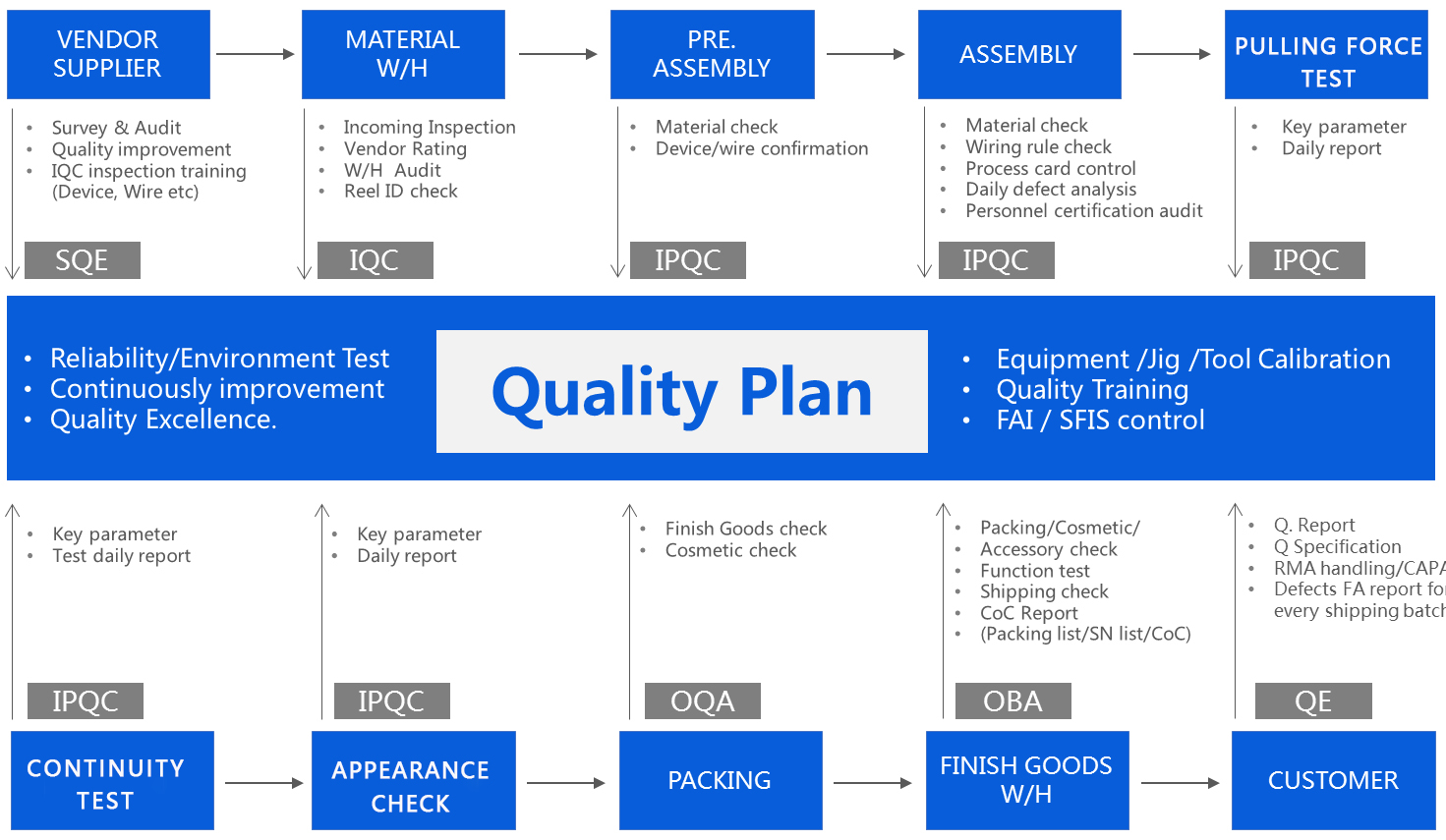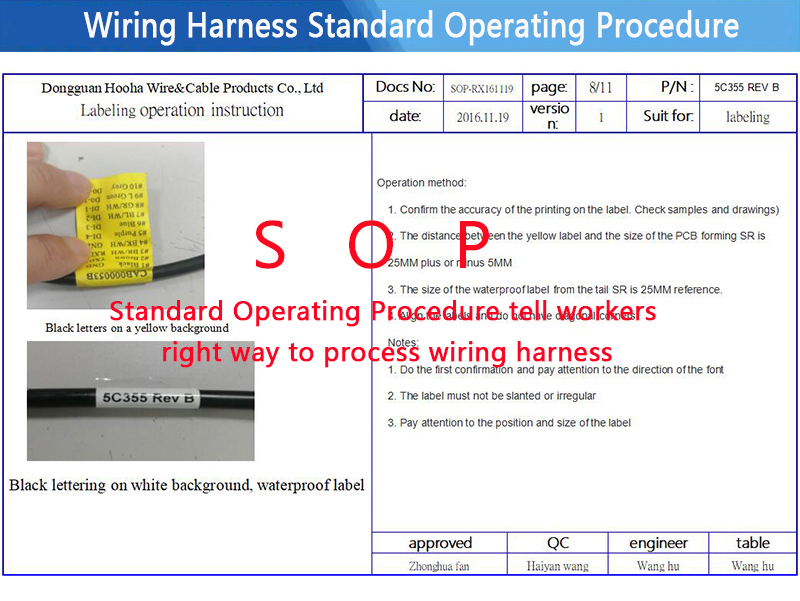What Quality We Have
At Hooha Harness, we take pride in the fact that we have complete control over the quality of our products. From the moment a project is taken on from one of our valued customers to the final product being delivered into their hands, every step of the process is carefully monitored and managed by us. We understand that quality is not just about meeting industry standards or ticking boxes on a checklist. It's about going above and beyond to ensure that each and every product we produce meets or exceeds our customer's expectations. That's why we invest heavily in state-of-the-art technology and equipment, as well as highly skilled professionals who are passionate about what they do. We believe that this combination allows us to deliver exceptional results time after time. whether you're looking for a custom-made solution or simply need high-quality finished goods for your business, you can trust us to provide nothing but excellence at every stage of the process. Below are some of the key points of quality policy for your reference, if you want to know more, contact us immediately.
Quality Assurance System

Hooha Harness Company is a leading wire harness manufacturer that prides itself on its exceptional Quality Assurance System. Our commitment to excellence is evident in every product we produce, and our team of skilled professionals works tirelessly to ensure that each wire harness meets the highest standards of quality. Our Quality Assurance System is an integral part of our production process, ensuring that every wire harness undergoes rigorous testing and inspection before it leaves our facility. We take great care to ensure that each product meets or exceeds industry standards for performance, reliability, and safety. Whether you need custom wire harnesses for your automotive, consumer electronics, or industrial application, you can trust Hooha Harness Company to deliver high-quality products with unmatched precision and attention to detail.
IQC and OQC

The ANSI/ASQ Z1.4-2008 standard is a widely recognized quality control measure that outlines the acceptable levels of defects in manufactured products. This standard provides guidelines for sampling procedures and acceptance criteria based on statistical analysis, ensuring that products meet predetermined quality standards before they are released to the market. The ANSI/ASQ Z1.4-2008 standard is an essential tool for manufacturers who want to maintain consistent product quality and minimize the risk of defects or recalls. By adhering to this standard, companies can ensure that their products meet customer expectations and comply with industry regulations. Hooha Harness carries out ANSI/ASQ Z1.4-2008 standards for all materials in and out, quality coefficients are regularly 0.65 or 1.0 standard, "0 receive and 1 return" principle.
Wire and Terminals Pulling Force Standard

High-quality wire harness products require the pulling force between the wire and the terminal to meet certain standards, Hooha Harness adherence to the IPC/WHMA-A-620 Standard. This standard sets the benchmark for excellence in wire harness manufacturing, ensuring that all products meet strict quality control measures. The pulling force test is an essential part of this process, as it determines whether wires and terminals can withstand the stresses they will encounter during use. By carrying out this test according to the IPC/WHMA-A-620 Standard, Hooha Harness can be confident that our products are safe, reliable, and durable. At its core, Wire and Terminals Pulling Force involves applying a specific amount of force to a wire or terminal until it reaches its breaking point. The results of this test provide valuable insights into how well these components will perform under real-world conditions. By adhering to the IPC/WHMA-A-620 Standard when conducting Wire and Terminals Pulling Force tests, we can ensure that our products meet industry-leading standards for quality and safety. This not only benefits customers but also helps build trust in the Hooha Harness brand itself by demonstrating a commitment to excellence in every aspect of production.
Wiring Harness Manufacture Control Plan

The Wire Harness Control Plan is an essential document that outlines the procedures and guidelines for the manufacturing, testing, and inspection of wire harnesses. This plan serves as a roadmap for ensuring that all wire harnesses meet the required quality standards and specifications. The control plan includes detailed information on the materials used in the production process, such as wires, connectors, terminals, and protective sleeves. It also specifies the tools and equipment needed to assemble these components into a functional wire harness. Moreover, this plan outlines various tests that must be performed at different stages of production to ensure that each wire harness meets specific performance criteria. These tests include continuity checks, insulation resistance tests, voltage drop tests, and many others. In addition to manufacturing processes and testing procedures, this control plan also covers documentation requirements such as labeling instructions for finished products or traceability records for individual components used in assembly. Overall, having a well-defined Wire Harness Control Plan is crucial for maintaining consistency in product quality while minimizing defects during production.
Wiring Harness Inspection Book

The art of crafting wire harnesses is a complex and intricate process that requires precision, skill, and attention to detail. At the heart of this craft lies the manufacture inspection book - an essential tool for ensuring that every wire harness meets the highest standards of quality. From start to finish, each step in the manufacturing process is carefully documented in this indispensable guide. From selecting the finest materials to testing each connection point with painstaking accuracy, every aspect of wire harness production is meticulously recorded. But it's not just about recording data - it's about using that data to continuously improve and refine our processes. By analyzing trends and identifying areas for improvement, we can ensure that our wire harnesses are always at the forefront of innovation and excellence.
PFMEA - Process Failure Mode Effects Analysis

Wire harness Process Failure Mode Effects Analysis is a comprehensive approach to identifying and mitigating potential failures in the manufacturing process of wire harnesses. This analysis involves a thorough examination of each step in the production process, from design to final assembly, with the goal of identifying any possible failure modes that could occur. By conducting this type of analysis, manufacturers can proactively address potential issues before they become major problems. This not only helps ensure product quality and reliability but also reduces costs associated with rework or recalls. The Wire Harness Process Failure Mode Effects Analysis typically includes a detailed review of all materials used in the manufacturing process, as well as an assessment of equipment and tooling. It also considers factors such as environmental conditions and operator error that may contribute to failures. Overall, this analysis provides valuable insights into how wire harnesses are produced and helps manufacturers optimize their processes for maximum efficiency and effectiveness. With its focus on prevention rather than reaction, it is an essential tool for any company looking to produce high-quality products consistently while minimizing risk.
SOP - Standard Operating Procedure

The wire harness process is a critical aspect of any manufacturing operation, and it requires a well-defined Standard Operating Procedure (SOP) to ensure consistent quality and efficiency. At its core, the SOP for wire harness production should outline the steps involved in designing, assembling, testing, and delivering these essential components. To begin with, the design phase involves creating detailed schematics that specify the type and quantity of wires needed for each harness. This step also includes selecting appropriate connectors and other hardware components that will be used to assemble the final product. Once the design is complete, the assembly can begin. This typically involves cutting wires to length, stripping insulation from their ends, crimping terminals onto them as necessary, and routing them through protective sleeves or conduit. The use of specialized tools such as wire strippers and crimpers is essential at this stage to ensure accuracy and consistency. After assembly is complete, each harness must undergo rigorous testing to verify its electrical integrity. This may involve using specialized equipment such as continuity testers or multimeters to check for proper connections between all wires in the bundle. Finally, once all tests have been passed successfully; packaging & delivery are done according to customer requirements ensuring timely delivery without compromising on quality standards set by our company's SOPs. In conclusion; having a robust SOP for wire harness production ensures that every step of this complex process is executed efficiently while maintaining high-quality standards throughout.
Send us an inquiry, Let's start with a trial order to experience our excellent quality control!
